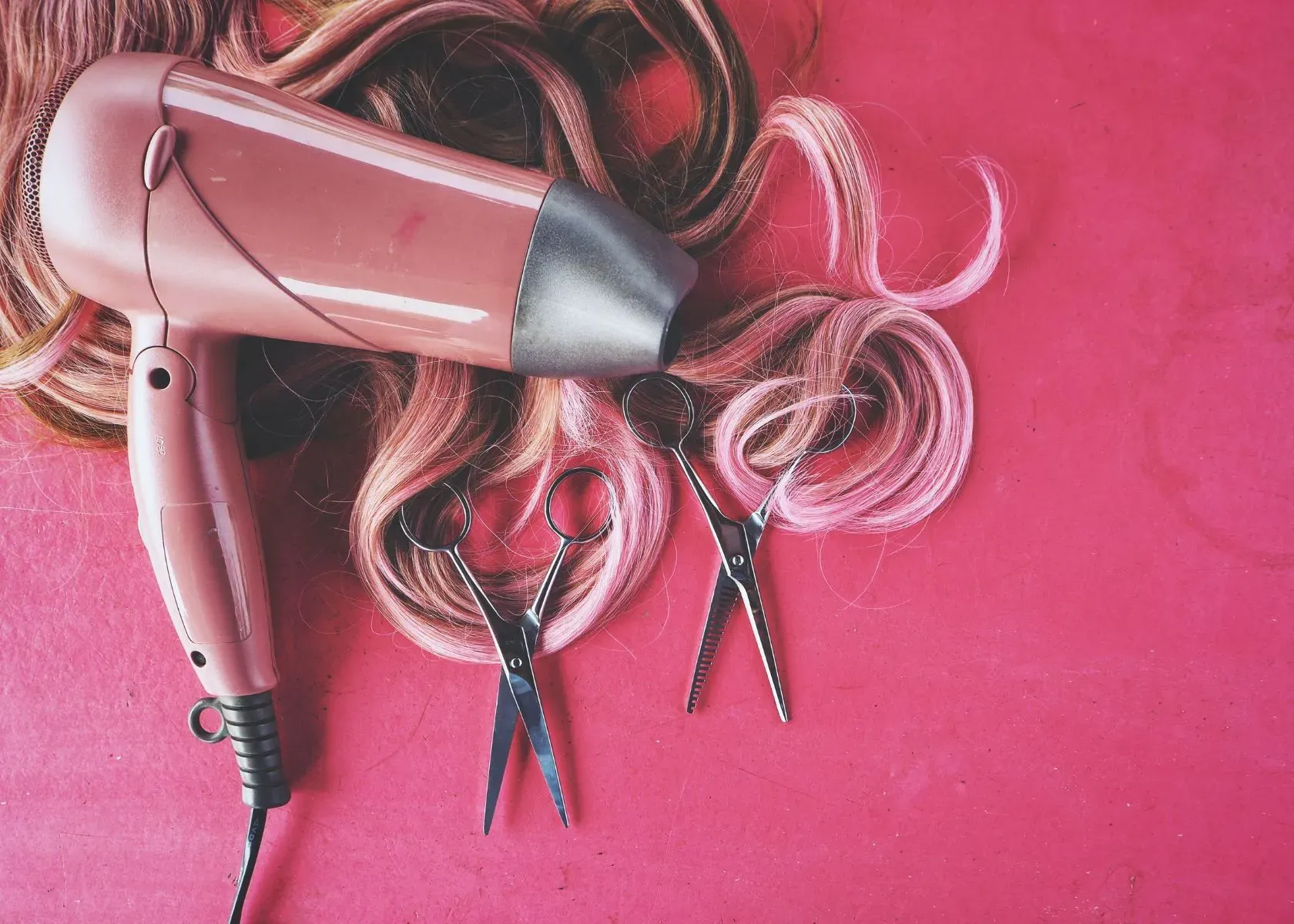Human hair wigs aren't just a fashion statement; they're a versatile solution for many seeking to change their look or restore confidence due to hair loss. Unlike synthetic options, human hair wigs offer a natural appearance and feel that can last anywhere from 6 months up to several years with the right care.
A lot depends on how the wig is made too; cap design and construction techniques are crucial for durability. It also matters how often you use heat styling tools or subject the wig to coloring treatments because these processes can shorten its lifespan significantly.
However, there's good news: some people have kept their human hair wigs in great condition for up to three years!
The trick lies in mastering the art of care and storage: gentle washing procedures, selective use of products designed specifically for wigs—not regular haircare items—and avoiding excess heat will make all the difference.
Get ready—your guide to making those beautiful locks last is just ahead.
- Human hair wigs offer a natural look and can last 1 to 3 years with proper care, while synthetic wigs generally last for a shorter period of around 4 to 6 months.
- The lifespan of a wig is influenced by factors such as material quality, cap construction, usage frequency, heat styling practices, and maintenance routines.
- High-quality human hair wigs made from Remy or virgin hair tend to last longer due to their intact cuticles and less processing compared to other types of human hair wigs.
- Reducing the frequency of washing, avoiding excessive heat styling, and using suitable products designed for wig care are essential steps in extending the life of your wig.
- Storing your wig head cap properly on a mannequin head or breathable stand away from direct sunlight and humidity helps maintain its shape and prevents damage over time.
Understanding the Lifespan of Wigs

Human hair wigs typically have a longer lifespan than synthetic hair wigs, but both are affected by various factors such as material quality, construction techniques, usage frequency, and care routines.
These factors play a crucial role in determining the longevity of your wig.
Human hair vs. Synthetic wigs
Understanding the distinction between human natural hair and synthetic wigs is crucial to comprehending their respective lifespans.
Wigs made from human hair generally offer a longer lifespan when properly maintained, ranging from 1 to 3 years. Synthetic wigs, while more affordable, tend to last for shorter periods of around 4 to 6 months with regular use. The longevity of each wig type is heavily influenced by the care they receive and the frequency of wear.
Quality human hair wigs, especially those made from Remy's hair, are known to surpass the typical lifespan with diligent maintenance. Ultimately, investing in high-grade human hair wigs and committing to a thorough care regimen can ensure the wig maintains its appearance and function for several years.
Factors that Affect Longevity
Factors affecting the longevity of wigs include the quality and origin of the material, construction techniques and cap design, frequency of wear, styling and heat application, as well as care and maintenance routine.
The material quality plays a significant role in determining the lifespan of a synthetic wig. Wigs made from high-quality Remy hair are known to last longer than those made from lower-quality hair. Additionally, construction techniques and cap design also impact the durability of wigs.
The way a wig is constructed directly affects its ability to withstand daily wear and tear. Usage and frequency of wear are essential factors; regular wear can cause more strain on the wig fibers compared to occasional use. Styling and heat application can reduce a wig's lifespan; excessive heat styling can lead to damage over time.
However, maintaining a proper care routine is crucial for keeping a wig in good condition for an extended period of time. Regular washing, conditioning with appropriate products, reducing heat applications, and storing it correctly all contribute to prolonging the life of a wig.
Factors that Affect the Lifespan of Wigs

The material quality and origin, construction techniques and cap design, usage and frequency of wear, styling, and heat application, and care and maintenance routine all play a role in determining the lifespan of wigs.
Understanding these factors can help you make informed decisions about how to extend the life of your wig.
Material Quality and Origin
Human hair wigs can vary in quality depending on the origin of the hair and the processing methods used. High-quality human hair wigs are often made from Remy or virgin hair, which is sourced from a single donor and has its cuticles intact.
This results in a more natural look and longer lifespan for the wig, as the hair is less prone to tangling and damage.
The origin of the hair also plays a significant role in determining its quality and longevity. For example, European or Brazilian human hair is known for its durability and strength, while Asian hair may require more processing to achieve a desired texture, potentially affecting its longevity.
Construction Techniques and Cap Design
The construction techniques and cap design of a wig play a crucial role in its longevity. Wigs constructed with high-quality materials, such as lace fronts or hand-tied caps, often have better durability.
Additionally, the way in which the hair is sewn into the cap can impact how long the wig will last. A well-constructed wig can withstand regular wear and maintenance, making it a worthwhile investment for those looking for long-term use.
Furthermore, considering the ventilation and comfort provided by different wig cap designs is essential for ensuring that the wig can be worn comfortably over extended periods.
Factors such as adjustable straps and soft materials also contribute to the overall lifespan of a wig, providing added support and reducing everyday wear and tear on the unit.
Usage and Frequency of Wear
To maximize the lifespan of a human hair wig, it is essential to consider the frequency and duration of wear. Daily use for wig wearers can lead to more frequent washing, styling, and exposure to environmental factors, which can contribute to wear and tear over time.
Although human hair wigs are durable, excessive daily wear may shorten their overall lifespan compared to occasional or periodic use.
Wigs that are worn daily typically require more frequent care and maintenance routines such as washing, conditioning, detangling, and restyling. The exposure to sweat, oils from the scalp, and friction from wearing the wig can impact its longevity.
Styling and Heat Application
When it comes to styling and applying heat to human hair wigs, it's important to be mindful of the impact these practices can have on the lifespan of the wig. Excessive use of heated styling tools such as curling irons or straighteners can lead to damage and breakage, shortening the longevity of the wig.
It's crucial to use heat-protectant products before applying any hot tools and avoid using high temperatures whenever possible. Additionally, frequent styling with harsh chemicals or dyes should be minimized as they can cause premature wear and tear on the wig strands.
To maintain the durability of a human hair wig, it’s essential to approach styling with caution. Opt for low-heat settings when using thermal tools, limit chemical processes, and handle the wig gently to ensure an extended lifespan.
Care and Maintenance Routine
To ensure a longer lifespan for your human hair wig, it is essential to establish a regular care routine. Start by gently brushing the wig before and after each use to prevent tangling.
Using specific wig shampoos and conditioners along with lukewarm water can help maintain its natural shine and softness. Avoid over-washing to preserve the integrity of the hair strands, and let it air dry on a stand or mannequin head to retain its shape.
In addition, minimize heat styling and opt for heat protectants when necessary to reduce damage from styling tools. Finally, store the wig in a cool, dry place away from direct sunlight when not in use, using a breathable storage option like a mesh bag or box with air holes.
How Long Do Human Hair Wigs Last - FAQs
Human hair wigs can last a long time if properly cared for. Many people who invest in high-quality human hair wigs are curious about just how long their wigs can last with regular wear and proper maintenance.
Below are some frequently asked questions and answers regarding the lifespan and durability of human hair wigs. Whether you’re new to wigs or an experienced wig wearer, these FAQs should help you understand what impacts the longevity of human hair pieces and how to make your wig last.
How long can a human hair wig last with proper care?
With consistent wig care and maintenance, a high-quality human hair wig can last for over a year, even if you wear it daily.
What are the best tips for extending the lifespan of my human hair wig?
To extend your human hair wig's longevity, follow a regular maintenance routine, including gentle washing, deep conditioning, and proper storage.
Is there a difference in durability between synthetic wigs and human hair wigs?
Yes! Human hair wigs generally offer more durability than synthetic ones when comparing their lifespan under similar care conditions.
Can frequent wearing reduce the life of my human hair wig?
Wearing wigs daily can contribute to wear and tear; however, with diligent maintenance and care routines, you can preserve your investment and ensure its continued use.
How do I maintain the quality of my human hair wig to make it last longer?
To maintain the quality of your human hair wigs, handle them delicately while washing and styling, protect them from heat damage, and store them properly when not in use.
Are there any advantages of choosing a human hair wig over a synthetic one regarding how long they last?
One major advantage of choosing a human hair wig is its potential for greater durability; with good care practices, these wigs maintain their appearance longer than many synthetic options.
Conclusion
Human hair wigs can last between 1-3 years with proper care. By following the provided care tips, you can ensure practical and efficient maintenance. The importance of these strategies lies in their potential to significantly extend a wig's lifespan.
For further guidance, consider seeking professional advice for your specific needs. Always remember that maintaining your wig is key to preserving its longevity. If you have any questions relating to the human hair wigs, feel free to ask in the comments below.
Read More About Human and Synthetic Hair Wigs





